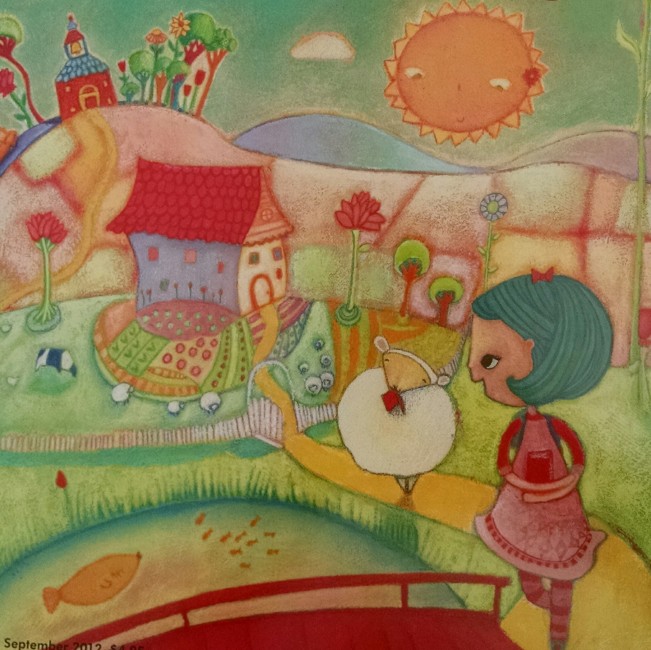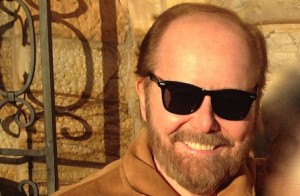What joy simple pleasures bring! One of our greatest gifts is the ability to simply take time to appreciate and enjoy the world around us. Fine-tuning our ability to notice detail is an important skill of the artist and the writer. It is an important skill for everyone to enjoy!
Every time you see something new, take a moment to really get to know the object with your eyes. Practice this technique on new things that you see. Take time to rediscover old, familiar objects and places. Look outside and find something new. Take time to let your vision appreciate your discoveries. Look at the detail. Let your mind tell you what your eyes have found.
Try this technique on people. Try it on a loved one. Look at them. Really look at them as though you are seeing them for the first time. Look closely. Find something new about them that you never saw before. Appreciate them with your eyes.
Look at nature. Study the sky, the trees, birds, and animals. Open your eyes wide and take in the entire landscape. Slowly zoom in on one particular object. Notice its detail. Let it paint its picture into your mind’s eye.

Art by Susan Swan
Give your eyes permission to be young and curious again. Look for things to behold, for things to bring into your new world of observation. Look up at the sky. Forget the cumulus, cirrus, and stratus. Search for the long-tailed dragons and sailing ships. Let the child in you wake up with fresh eyes each morning.
Try these six steps:
- LOOK. The first step of observation is to simply open your eyes and look.
- SEE. Now pause and focus on the object, person, or scene.
- NOTICE. Select one, specific area to study.
- PONDER. Allow your mind’s eye to enter into your vision.
- STUDY. Explore the minor detail of your subject.
- BEHOLD. Allow your mind, your emotions and all your senses to begin making free associations, literal and abstract, with the various aspects of your subject until the delicate essence of your subject is no longer simply a part of your observation, but a part of you.
Look for color, size, shape, and texture. Try to feel the object with your eyes. Choose new vantage points from which to observe the familiar. Look for similarities and differences. Look for parallels and contradictions. Look from the inside out.
Play what-if games with your observations. What if it were larger or smaller? What if it were a different color, size, or shape? What if it were found someplace else? What else could it be other than what it first appears?
And finally, remember what the poet Paul Valery once wrote: “To see is to forget the name of the thing that one sees.”
Forget and behold.
Choice Art
The answer to the artist
Comes quicker than a blink
Though initial inspiration
Is not what you might think.
The Muse is full of magic,
Though her vision’s sometimes dim;
The artist does not choose the work,
It is the work that chooses him.
Inner View
Look inside the scape called sea
Until the ocean owns your eyes;
Search beneath the surface shine
Until its depth dispels its lies.
Climb your stare upon each wave
Until you see all shades of green;
Swim your vision past itself
Until your sight becomes the scene.
Charles Ghigna – Father Goose® lives in a treehouse in the middle of Alabama. He is the author of more than 100 award-winning books from Random House, Disney, Hyperion, Scholastic, Simon & Schuster, Time Inc., Abrams, Boyds Mills Press, Charlesbridge, Capstone, Orca and other publishers, and more than 5000 poems, many of which appear in textbooks and anthologies, and in newspapers and magazines from The New Yorker and Harper’s to Cricket and Highlights. He served as poet-in-residence and chair of creative writing at the Alabama School of Fine Arts, and as a nationally syndicated feature writer for Tribune Media Services. He has spoken at schools, colleges, conferences, libraries, and literary events throughout the U.S. and overseas, and has read his poems at The Library of Congress, The John F. Kennedy Center for the Performing Arts, the American Library in Paris, the American School in Paris, and the International Schools of South America. For more information, please visit his website at FatherGoose.com.




